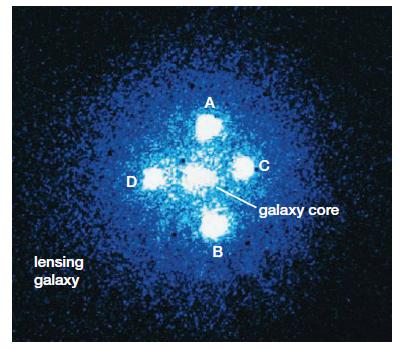Our discussion of microlensing assumed a single star and a circularly symmetric potential about it. This is
Question:
Our discussion of microlensing assumed a single star and a circularly symmetric potential about it. This is usually a good approximation for stars in our galaxy. However, when the star is in another galaxy and the source is a background quasar (Figs. 7.19, 7.20), it is necessary to include the gravitational effects of the galaxy’s other stars and its dark matter. Recast the microlensing analysis (Sec. 7.6.3) in the potential formulation of Eq. (7.98) and add external magnification and external shear contributions to ψ that are proportional to θx2 + θy2 and θx2 − θy2, respectively. The latter will break the circular symmetry, and structurally stable caustics will be formed. Explore the behavior of these caustics as you vary the strength and sign of the magnification and shear contributions. Plot a few flux variations that might be observed.

Figure 7.19

Figure 7.20

Step by Step Answer:

Modern Classical Physics Optics Fluids Plasmas Elasticity Relativity And Statistical Physics
ISBN: 9780691159027
1st Edition
Authors: Kip S. Thorne, Roger D. Blandford




